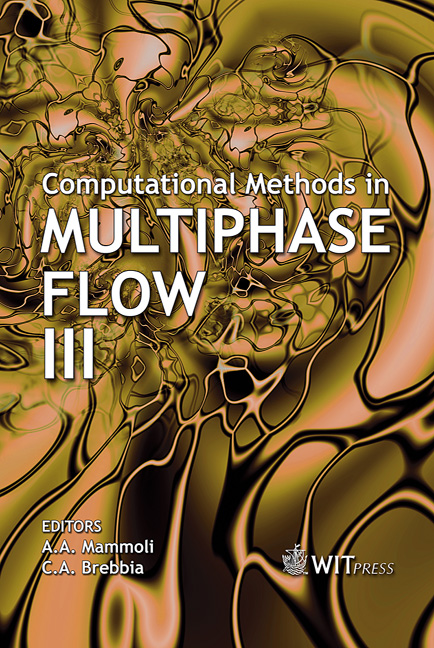Mixing In A Gas/liquid Flow Countercurrent Bubble Column
Price
Free (open access)
Transaction
Volume
50
Pages
10
Published
2005
Size
804 kb
Paper DOI
10.2495/MPF050041
Copyright
WIT Press
Author(s)
T. A. Bartrand, B. Farouk & C. N. Haas
Abstract
This paper presents results of experimental and numerical investigations into the hydrodynamics of a bench scale bubble column reactor. Countercurrent bubble column reactors are the reactors most commonly used in water treatment for effecting the mass transfer of ozone to the aqueous phase. The experimental reactor is a glass cylinder with an internal diameter of 17 cm and height of 1.8 m. Gas is introduced at the bottom of the column via a 2.5 cm spherical diffuser and water is introduced to the top of the column through a manifold packed with glass spheres. Residence time distribution (RTD) studies were conducted for a range of gas flow rates chosen to span the dispersed flow bubble regime. A computational fluid dynamics computer code was used to model flow in the bubble column. Numerical studies were performed to refine and validate the CFD model and to gain insights into the fluid dynamics of countercurrent flow bubble columns. Investigations identified a gas flow rate within the ideal bubbly flow regime at which large-scale hydrodynamics and phase distribution were significantly different from those encountered at lower gas flow rates. These results will be used in subsequent studies in which ozone mass transfer and chemistry are included. Keywords: countercurrent, bubble column, dispersion, CFD. 1 Introduction In water and wastewater treatment, bubble contactors are used frequently for dissolution of gaseous ozone into the aqueous phase because of their simple design, low energy requirements (excluding the energy required in ozone generation) and familiarity to the industry and regulatory agencies (Langlais et al. [1]). Full-scale contactors typically employ baffled chambers in which
Keywords
countercurrent, bubble column, dispersion, CFD.





